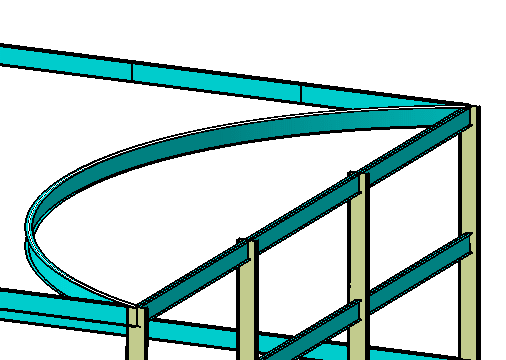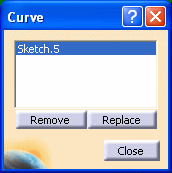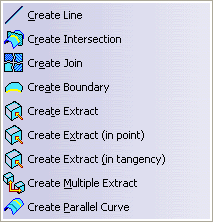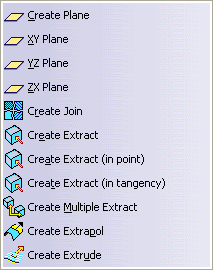You can select More to display the Class Browser, and select from what is available in the catalog.
The name of the beam is assigned automatically, using the object naming rules. If you want to assign your own name to the beam, uncheck the Automatic box and enter a name.

- Select curves in your 3-D session.
- Right-click and select from the list of GSD stacking commands.
You see the beam display in your 3-D session as you make your selections.


The Curve dialog box lists the curved beams you selected.
You can use the Curve dialog box to replace a curve with another curve.
- Select the curve you want to replace from the list, and click the Replace button.
- Select a curve in the 3-D session. This curve displays in the Curve dialog box list in place of the original curve.
The selected curves are removed from the list.
Click Close when you have made all the necessary changes.
- Select surfaces in your 3-D session.
- Right-click and select from the list of GSD stacking commands.
You see the beams display in your 3-D session as you make your selections.
- Select an object in your 3-D session (reference plane, plate, stiffener, beam or pillar), and the beam is limited at that location.
- Right click to display a drop down list and select Select Reference Plane to display the Plane Systems dialog box. (You can select Delete Limit to delete a limit.)
NOTE: When you define a limit, the Invert Beam button becomes available. You can click it to invert a beam.
The Beam dialog box displays. Change the values as required.
Some fields are not available, and cannot be changed (such as Category).

